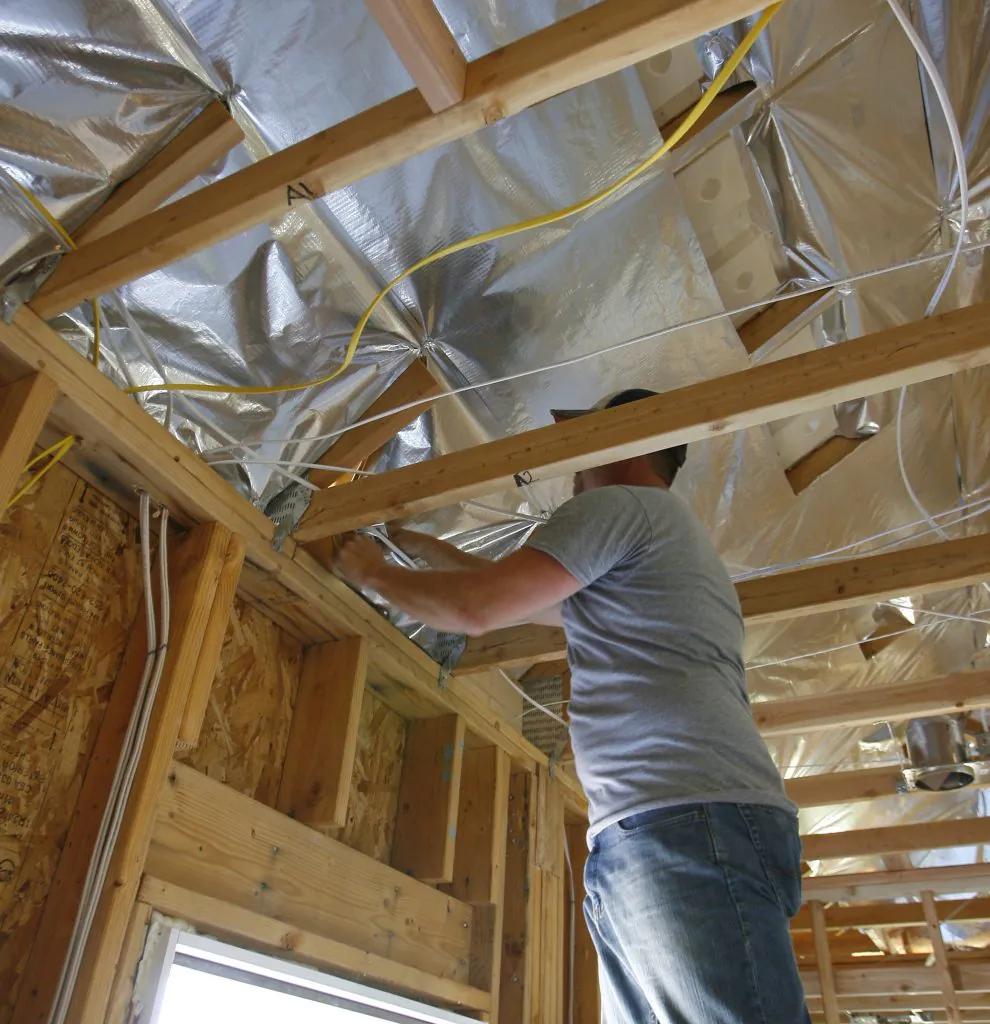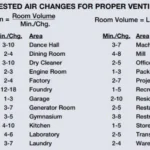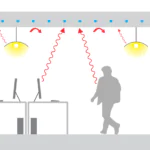Some attics have a foil-like material built into the structure, often on the plywood or draped over trusses under the roof decking. These foil-like sheets are “radiant barriers.” Their goal is to reflect some of the sun’s heat. In doing so, these barriers keep the attic cooler by reflecting solar heat gains back to the roof.
That sounds great, right? In theory, radiant barriers do seem useful for reducing the heat load during the summer. Theoretically, that would reduce your power bill. However, there is a lot more to air conditioning than keeping buildings cool, and radiant barriers can pose unique challenges to your comfort. Other problems may arise from improper installation.
If you plan to include radiant barriers in a new construction home (or already have them in your home), you may want to learn a bit more about them. This article will explain how they work, why improper installation renders them ineffective, and the challenges they pose for your HVAC system.
WHAT A RADIANT BARRIER DOES
Before we can understand what a radiant barrier does, we need to understand what heat is. Heat is the energy that causes molecules to move. Whenever you have something that has a temperature over -460 degrees Fahrenheit, there will be some heat. Heat moves in three different ways: conduction, convection, and radiation.
Conduction is how heat moves between two objects that are touching each other. When you hold a cup of hot coffee, your hands will start to warm up; that’s conduction at work. The thickness of walls and attic insulation help control heat in the attic via conduction.
Convection happens when heat transfers within a fluid (vapor or liquid). If you’re boiling water in a pot on the stove, you can hold your hand over it and feel warm. That’s because heat is traveling upwards through the air via convection. We can control convection in our homes by sealing gaps and cracks between rooms and unconditioned spaces (like the attic, crawlspace, or outdoors).
Radiation is what happens when heat travels on electromagnetic waves. The heat that comes in through glass windows has entered our home through radiation; the heat has passed through the glass via the sun’s electromagnetic waves, and we call it radiant heat. Radiant heat can either be mostly reflected by lighter objects or mostly absorbed by darker ones. The sun is just one example of radiant heat transfer; our bodies also radiate heat, as does everything around us.
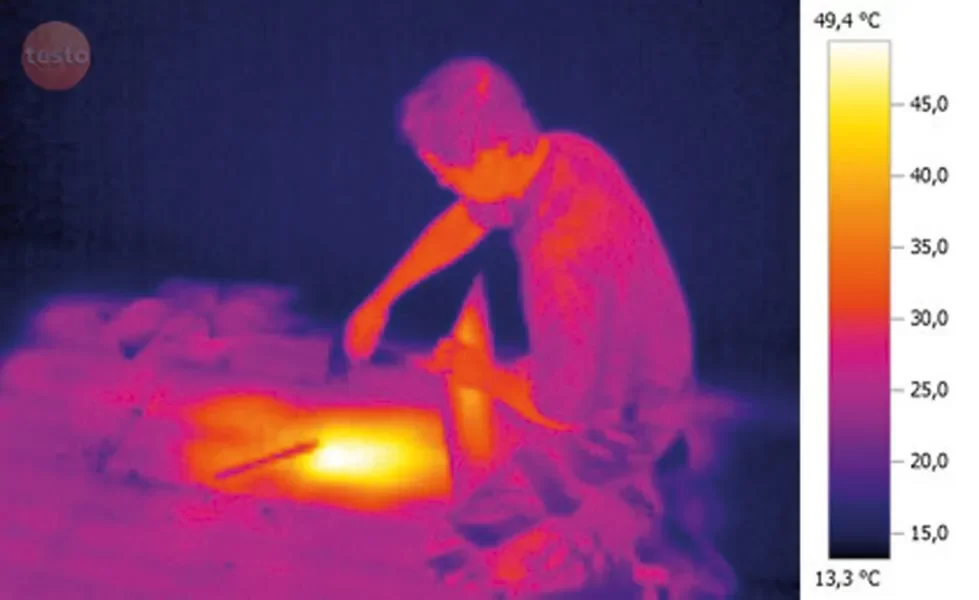
Radiant barriers consist of a highly reflective material to control radiation; the idea is that heat will be absorbed into the dark roof tiles and be reflected by the barrier. Your roof will get hot, but the attic will be cooler than it would have been without the barrier.
WHAT ARE THE UPSIDES OF HAVING A RADIANT BARRIER?
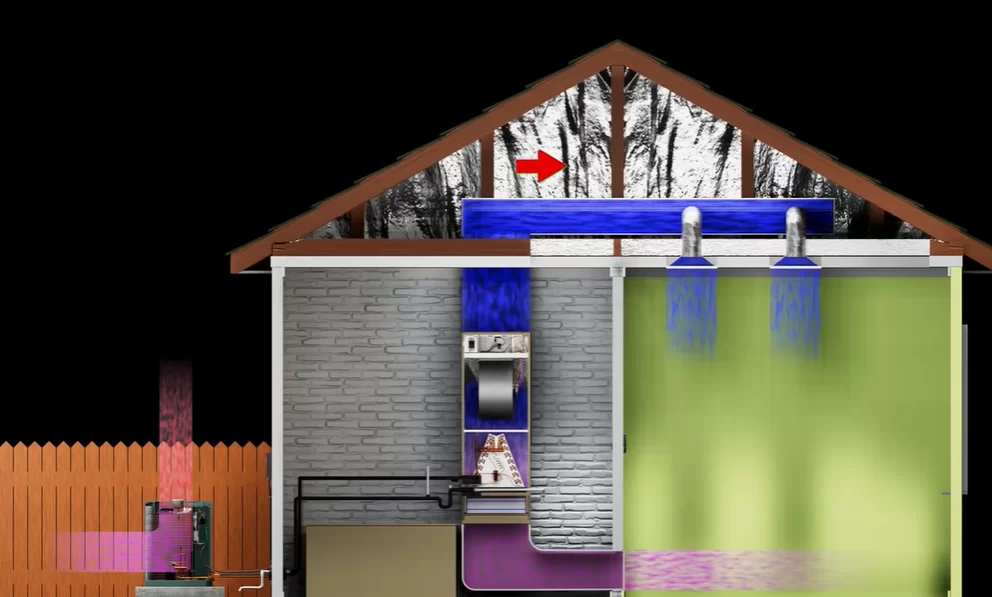
When installed correctly, radiant barriers keep your attic cooler and significantly reduce your energy expenses during the summer. In a warm and sunny climate like ours in Central Florida, you could see a 5-10% reduction in your cooling costs (per the U.S. Department of Energy).
Also, if you happen to store things in the attic, you’ll be able to keep them cooler. Your attic won’t be climate-controlled (compared to a storage unit), but it won’t be nearly as hot.
That’s pretty much where the benefits end.
WHAT ARE THE DOWNSIDES OF HAVING A RADIANT BARRIER?
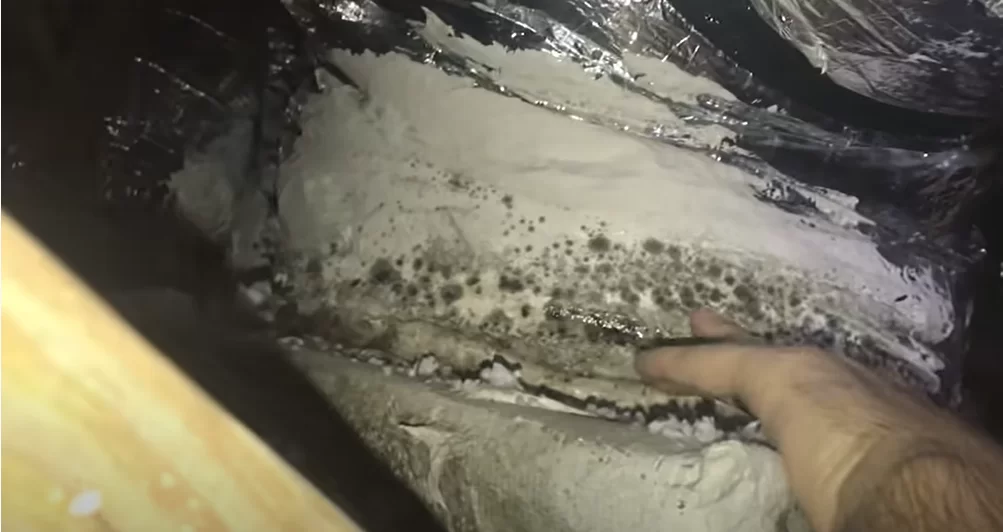
When radiant barriers keep your attic cooler, the duct surfaces get closer to the dew point. The dew point is the temperature at which water vapor in the air starts to condense and become water (like dew). The air at night tends to be cooler than during the day, and it can’t hold as much moisture; at night, objects radiate their heat and cool down, so the water vapor in the air around those objects condenses and becomes the dew that we see in the mornings.
We can get very high dew points in the summer, and if the attic air is cool enough to cause duct surface temperatures to drop below that dew point, then your ducts will start sweating.
Sweating ducts result in a wet attic, and fungal matter thrives in moist environments. So, you could very well get mold growth in your attic if it doesn’t stay warm enough during the summers.
That is the downside of having a correctly installed radiant barrier. What about those that incorrectly installed ones?
IMPROPER INSTALLATION: WHEN RADIANT BARRIERS ARE NO LONGER “RADIANT”
For radiant barriers to work properly, they need to face the source of radiant heat and have an air gap between the barrier and the source.
If the radiant barrier is sandwiched against the surface and doesn’t have that air gap, it becomes a means of conduction. The foil also happens to be a highly conductive material. As a result, it can transfer heat INTO your attic very effectively! Instead of reflecting radiant heat away from your attic, the barrier will conduct heat into the attic and achieve the opposite intended effect.
So, when radiant barriers are installed incorrectly, you could have even HIGHER cooling costs because of your hotter attic.
FINAL THOUGHTS
While correctly installed radiant barriers can yield some energy savings, they may also lead to fungal growth when the dew point is high. Mold can negatively impact your health. So, unless you have a dehumidifier in your attic (which uses energy and costs money to install and run), a radiant barrier may cause more trouble than it’s worth.
Radiant barriers aren’t necessarily bad, but they do raise a set of challenges in our climate. Unless you are willing to mitigate those challenges and know how you’d like to do that, a radiant barrier likely won’t be a worthwhile investment.

